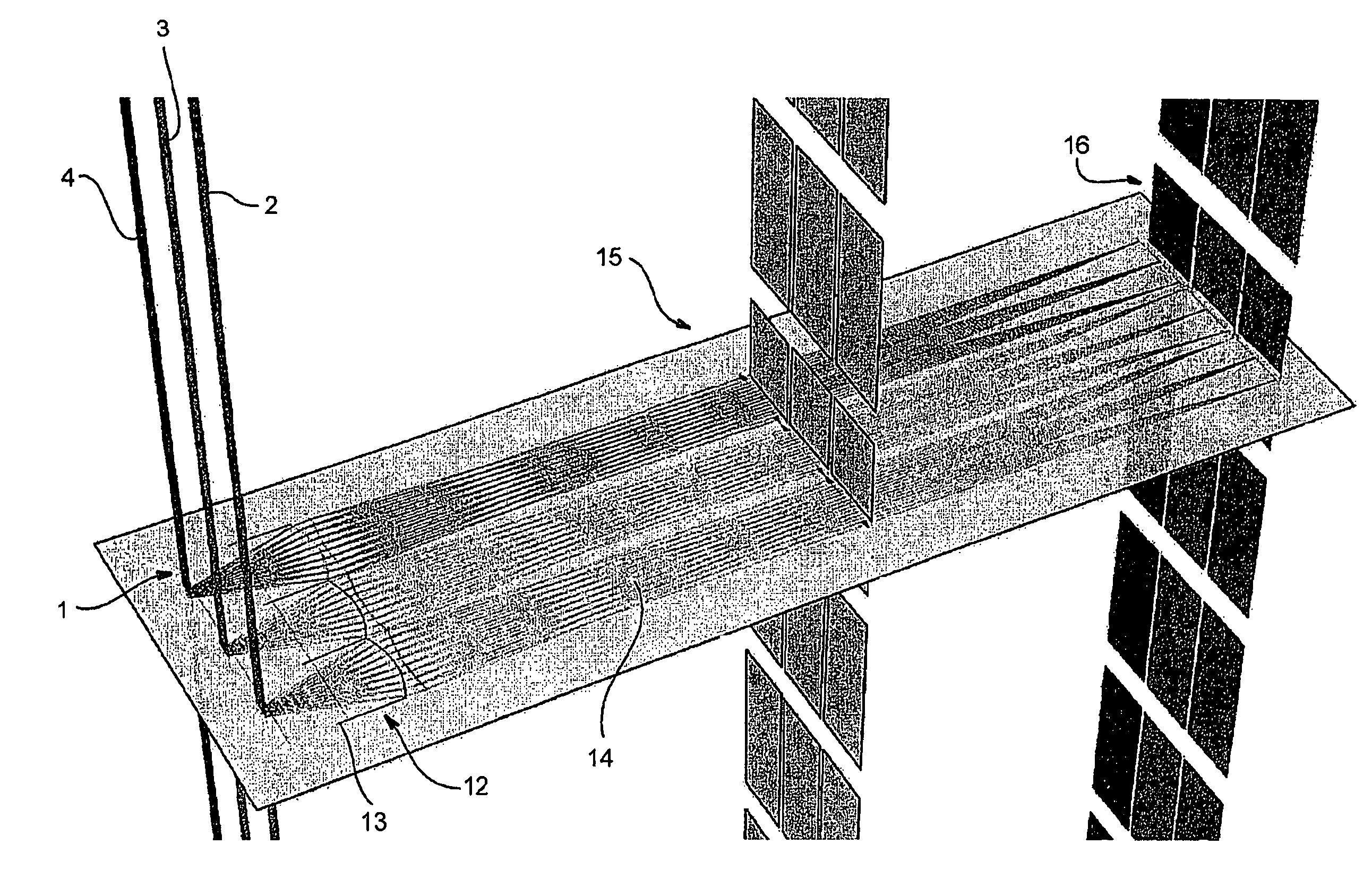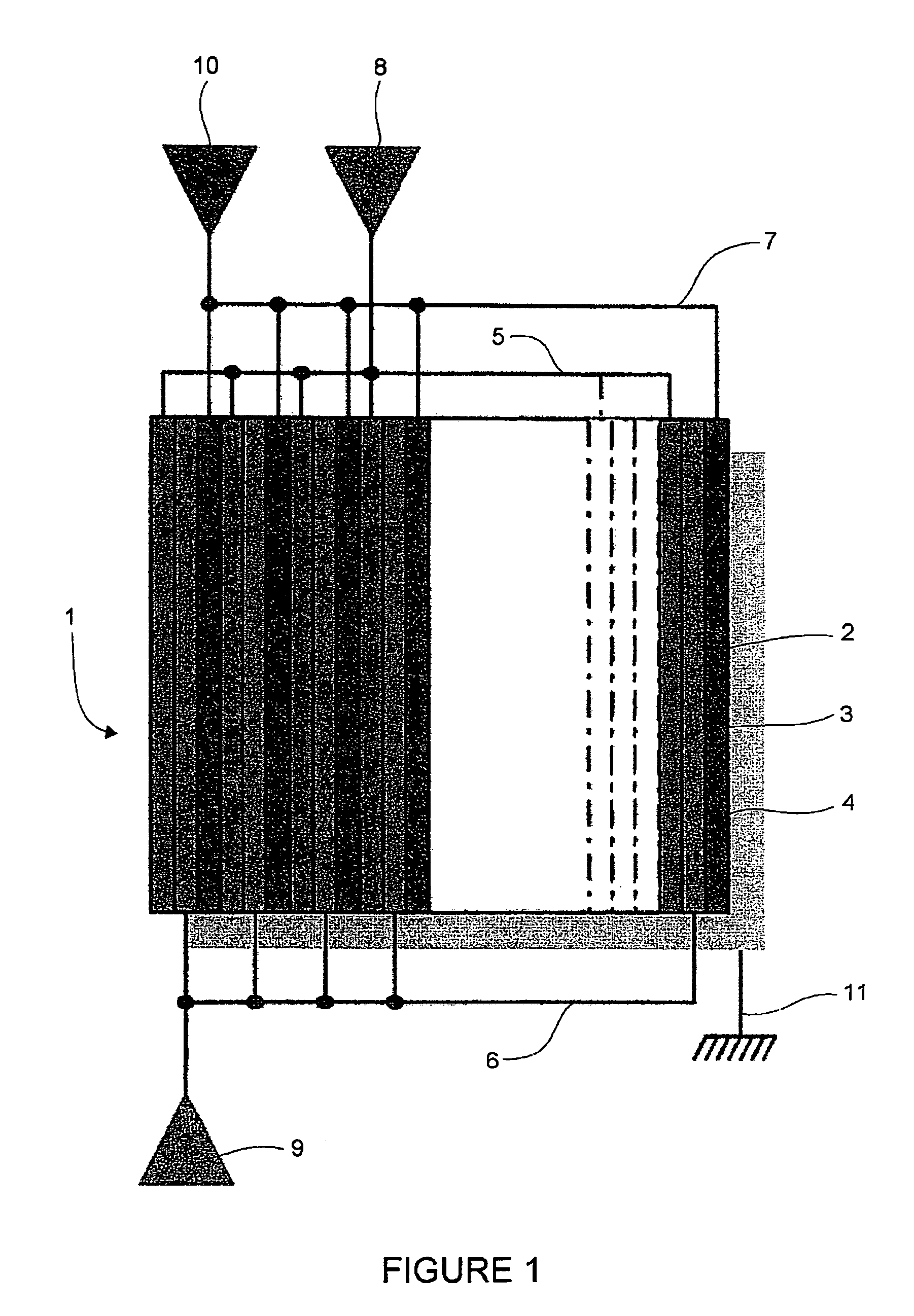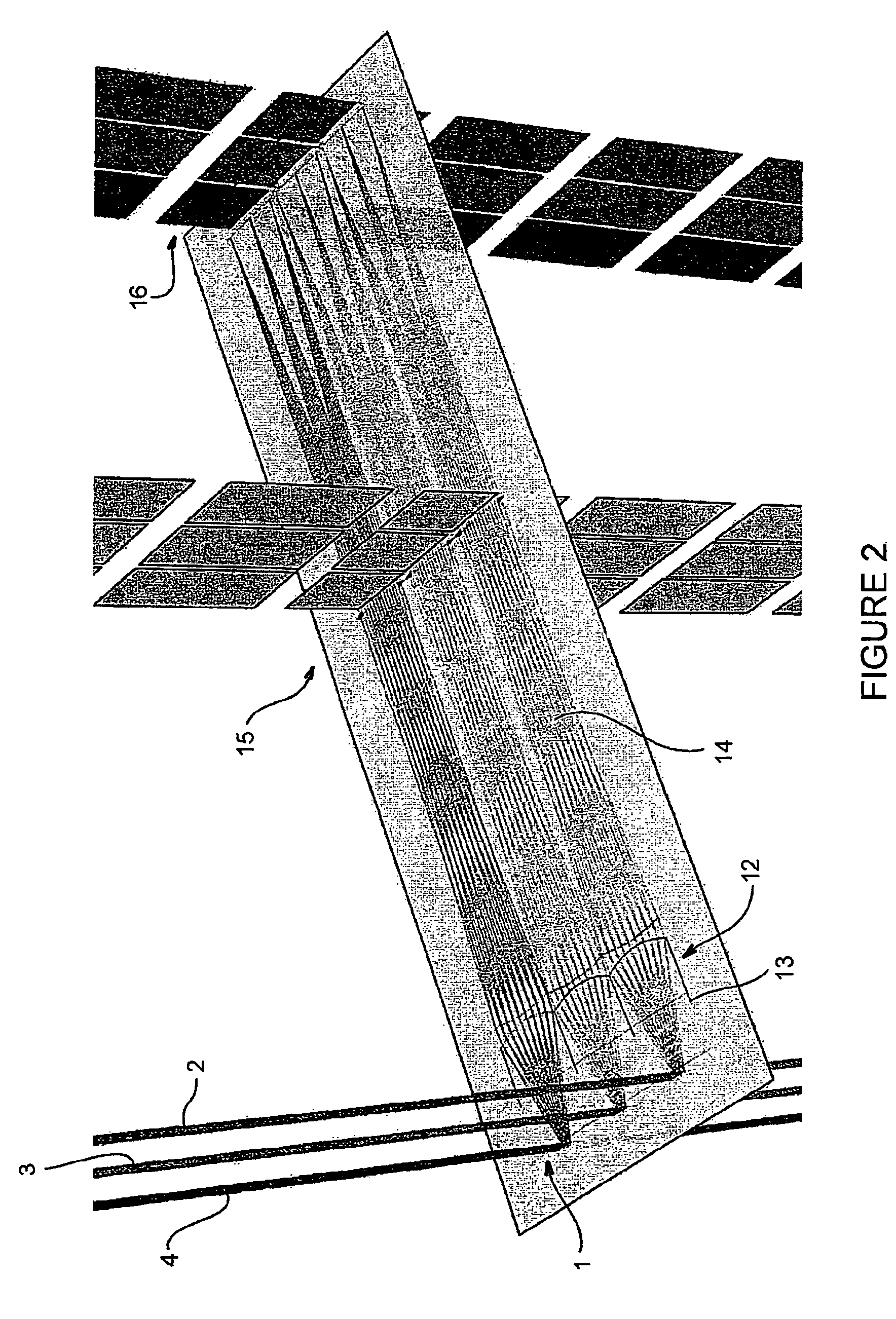Colour display device with backlighting unit using organic light-emitting diodes and method of implementation
- Summary
- Abstract
- Description
- Claims
- Application Information
AI Technical Summary
Benefits of technology
Problems solved by technology
Method used
Image
Examples
Embodiment Construction
[0047]The backlighting unit 1 using organic light-emitting diodes (OLED) is a substantially plane and square or rectangular structure formed from layers of materials designed to generate light by the action of an electric current. The manufacture of such a unit can use traditional fabrication techniques for OLEDs. By way of example, an OLED can comprise a substrate onto which a first electrode is deposited, above which is a layer of organic light-emitting material which itself is covered by a second electrode layer. Sub-layers can be incorporated into the layer of organic light-emitting material in order to promote the electro-photonic conversion. Depending on fabrication modes, the OLED emission can take place from the rear (through the substrate) or from the front (through the second electrode). In addition, depending on the kind of the electrodes, anode or cathode, the anode can be at the front or vice versa. The electrodes that must be transparent to the light produced by the OL...
PUM
 Login to View More
Login to View More Abstract
Description
Claims
Application Information
 Login to View More
Login to View More - R&D
- Intellectual Property
- Life Sciences
- Materials
- Tech Scout
- Unparalleled Data Quality
- Higher Quality Content
- 60% Fewer Hallucinations
Browse by: Latest US Patents, China's latest patents, Technical Efficacy Thesaurus, Application Domain, Technology Topic, Popular Technical Reports.
© 2025 PatSnap. All rights reserved.Legal|Privacy policy|Modern Slavery Act Transparency Statement|Sitemap|About US| Contact US: help@patsnap.com



